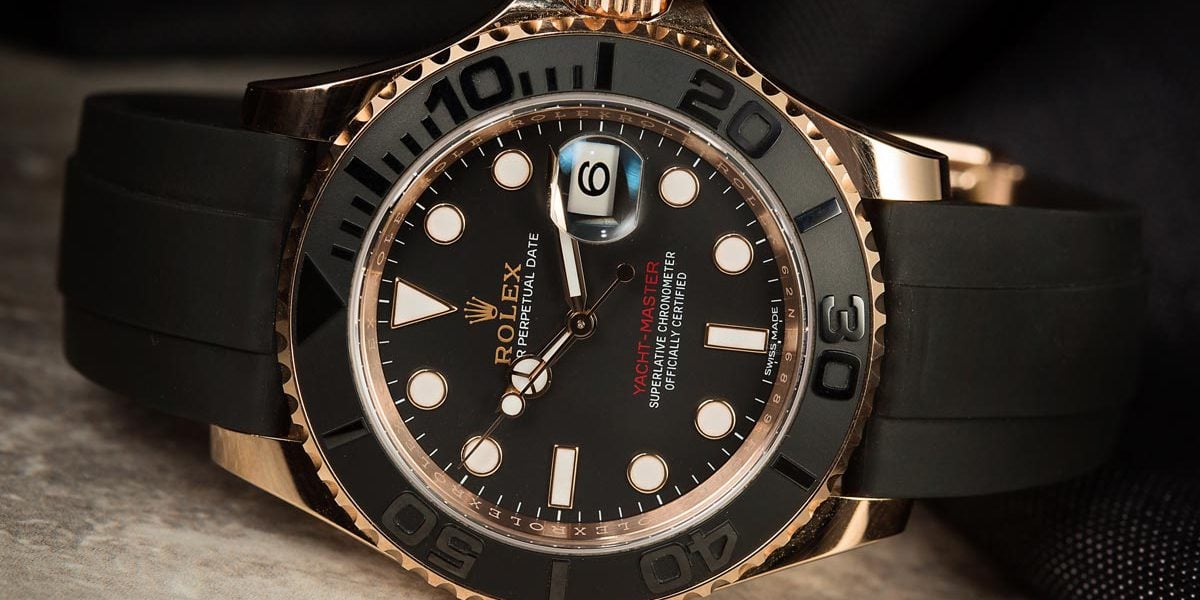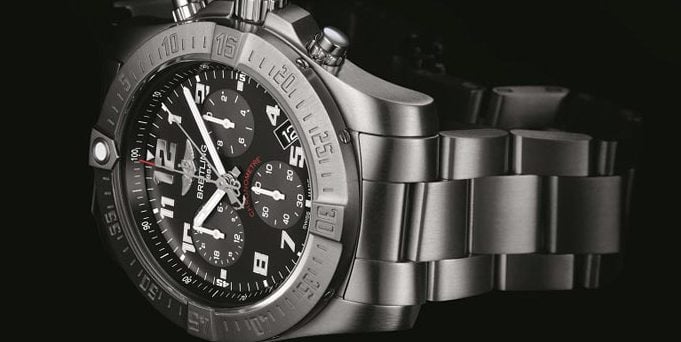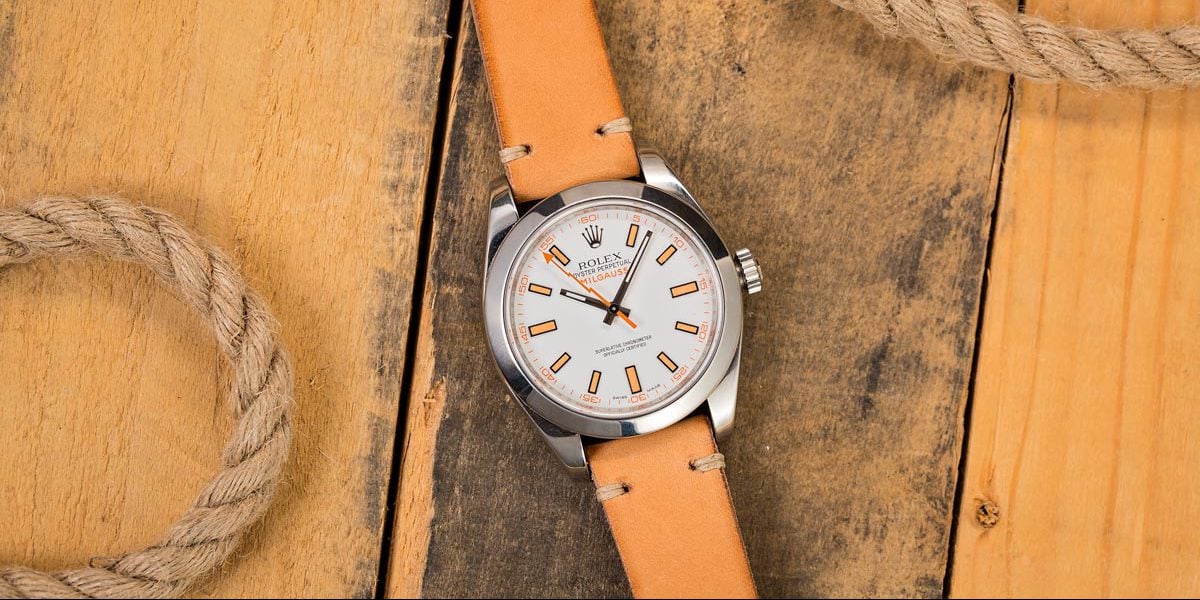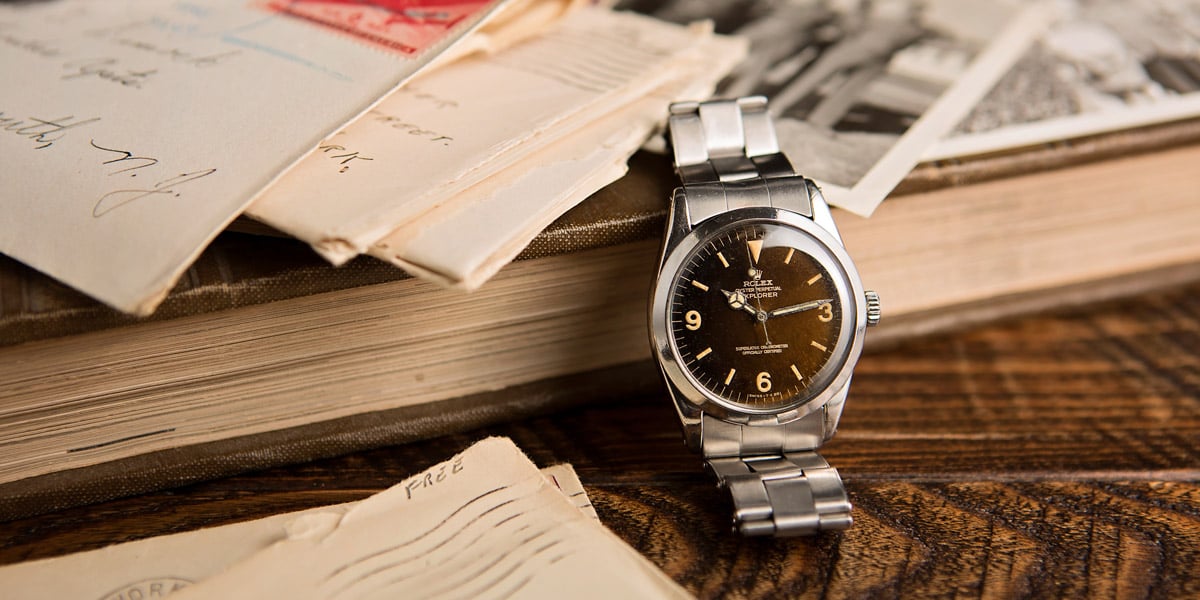The Yacht-Master has been an unashamedly high-end variation on the Submariner theme ever since it launched back in 1992. Only available in the most precious of precious metals, including being the watch to introduce Rolex’s own steel and platinum alloy Rolesium to the world, it has always been aimed squarely at the luxuriously active lifestyle market.
So the release of the two Everose gold, black dial versions in 2015 raised some luxuriously active eyebrows. With nothing quite like it emerging from the Rolex lair before, the 40mm ref. 116655 and its smaller brother, the 37mm ref. 268655 played host to several pioneering features.
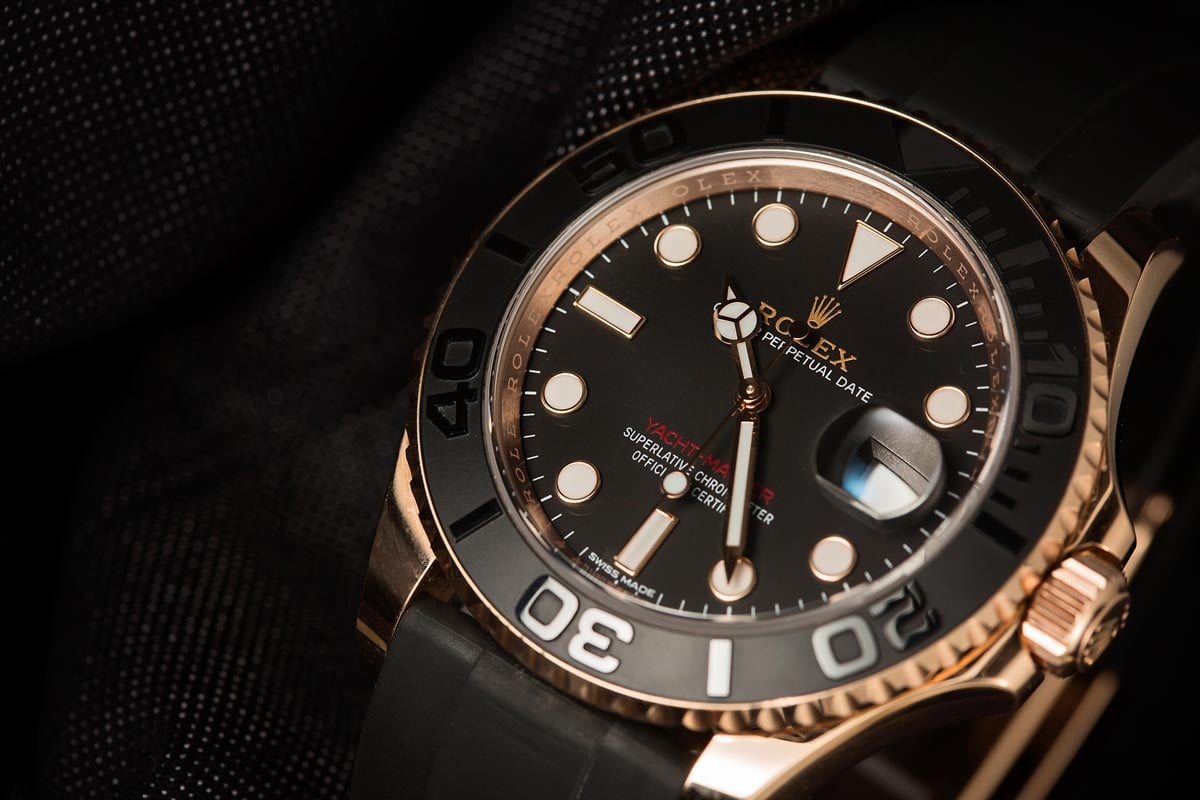
They became the first Yacht-Masters to sport matt black dials, a more restrained but still unmistakably masculine element which is echoed across onto the sandblasted bezels; again, the only time Cerachrom has been used in the series.
Housing two different calibers, the Cal. 3135 inside the 40mm version has been a staple of Rolex watches for nearly 30 years, but the 2236 that powers the 37mm is their first movement to contain a silicon composite, or Syloxi, hairspring. Found originally in the ladies Datejust Pearlmaster range, the smaller Yacht-Master became the first men’s watch with the movement.
But it’s the bracelet, the sophisticated black Oysterflex band, which marked the biggest departure from the norm. What could well be mistaken for a simple rubber strap actually keeps completely true to Rolex’s prevailing theory that anything worth engineering is worth over-engineering.
Inside is a thin titanium nickel alloy blade, overmoulded with a hypoallergenic elastomer. The result is a strap as durable as a metal bracelet and supple enough to conform to the natural shape of your wrist. Two longitudinal ridges underneath play the twin roles of cushioning the watch, preventing it from shifting around as you wear it, while also allowing fresh air to circulate between the strap and your skin to provide more comfort on warm days.
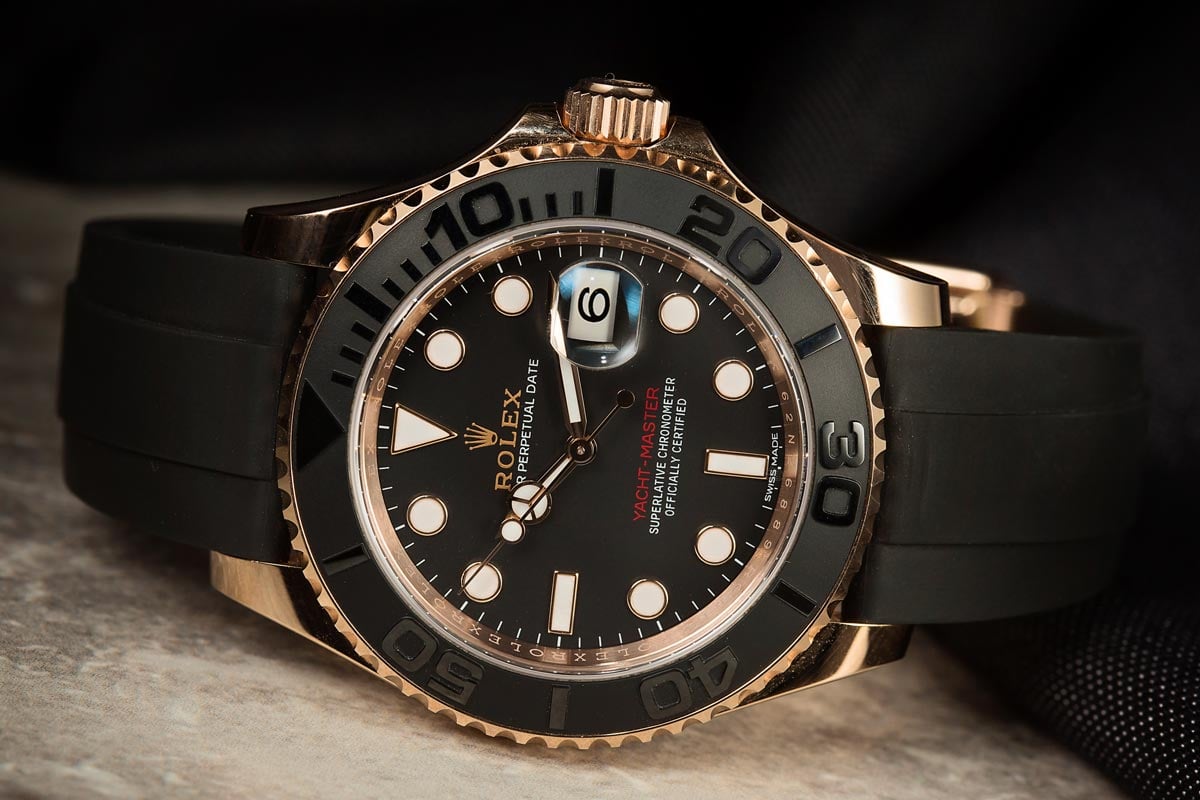
Secured with the same rock solid Oysterlock clasp you’d find on the brand’s metal bracelets, Rolex’s first foray into rubber straps is a typically striking one.
Overall, the dramatically different Yacht-Master duo has proved extremely popular. The unorthodox combination of Everose and black gives the watch an aura of coolness it hasn’t had before and has also made its way onto the latest generation of the watch world’s current hottest player, the Cosmograph Daytona.
In fact, there’s just one debating point that remains amongst the brand faithful. The Yacht-Master is the only sports watch in the range to be offered in a choice of sizes.
Let’s take a look at what that distinction means.
37mm versus 40mm
First off, let’s get the financials out of the way. There is understandably a price difference between the two, but it’s hardly what you’d call a gulf and won’t be a factor for the Yacht-Master’s target audience. Those with enough buying power to spend $22,000 on a watch are unlikely to suddenly balk at $25,000.
So the choice comes down to one of aesthetics. On its launch in 1992, the Yacht-Master was actually available in three different sizes—a 29mm ladies version, a mid-size 35mm and the full-scale 40mm. Today, there is no official ladies size, but the new 37mm watch is listed under both the men’s and women’s section on the Rolex website.
The main reason is obviously the current trend for women wearing larger watches, but another factor could be the use of Everose gold. The pinkish quality of the metal sees it blend in slightly with skin tones, making the watch appear smaller than it actually is.
However, out of the Yacht-Master range, the black dial and bezel variants are definitely the least showy, and the 37mm case is also a popular choice for men content to wear a very discreet watch; one that doesn’t need to shout, fits more comfortably under a shirt sleeve and benefits from a lighter overall weight.
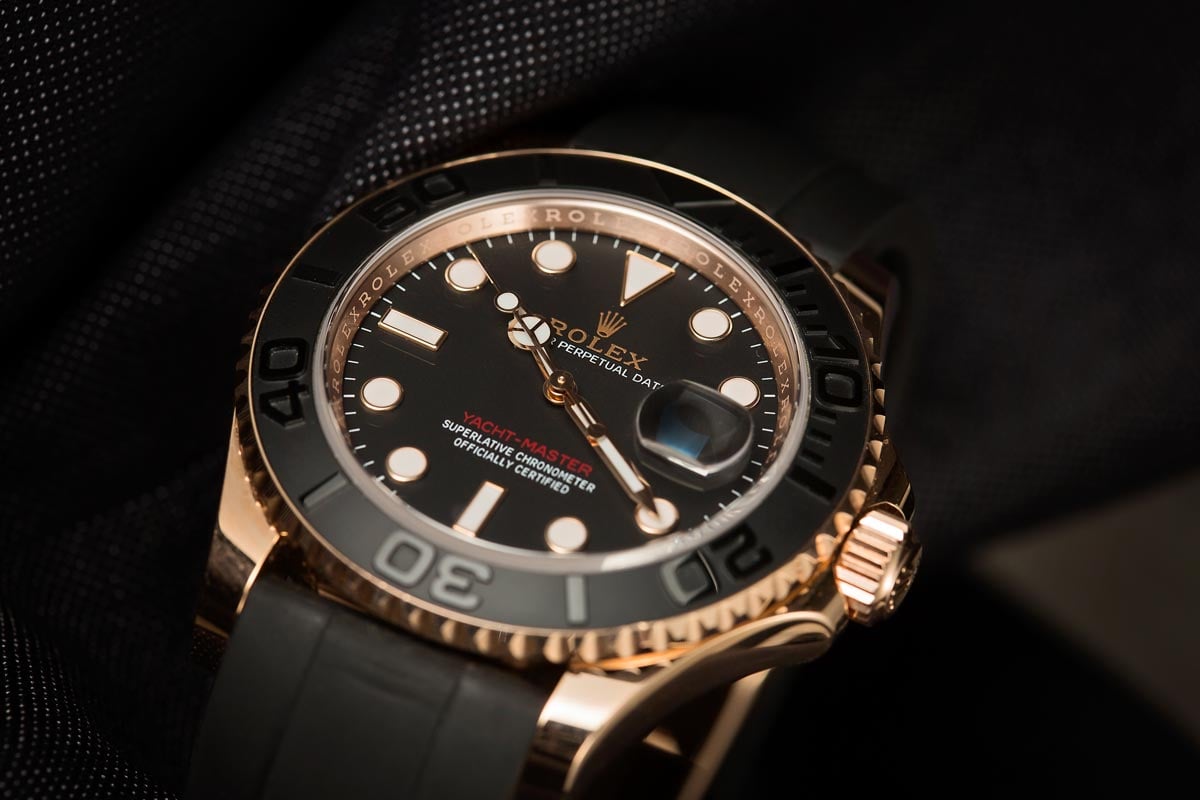
As for the 40mm watch, what would have been considered exceptionally large a few decades ago, is now very much an average. With that Everose effect of wearing smaller than the actual size, even men with slender wrists who usually opt for more modest pieces have been deciding to wear the bigger of the two models.
For an added bonus, with the contemporary thinking of bigger equals better, 40mm Yacht-Masters are enjoying a healthier resale value on the pre-owned market, if you decide you want to sell it on at some point down the road.
Conclusion on the Everose Yacht-Master
So, 37mm or 40mm? There is, of course, no right or wrong answer. The only choice is which size is better for you.
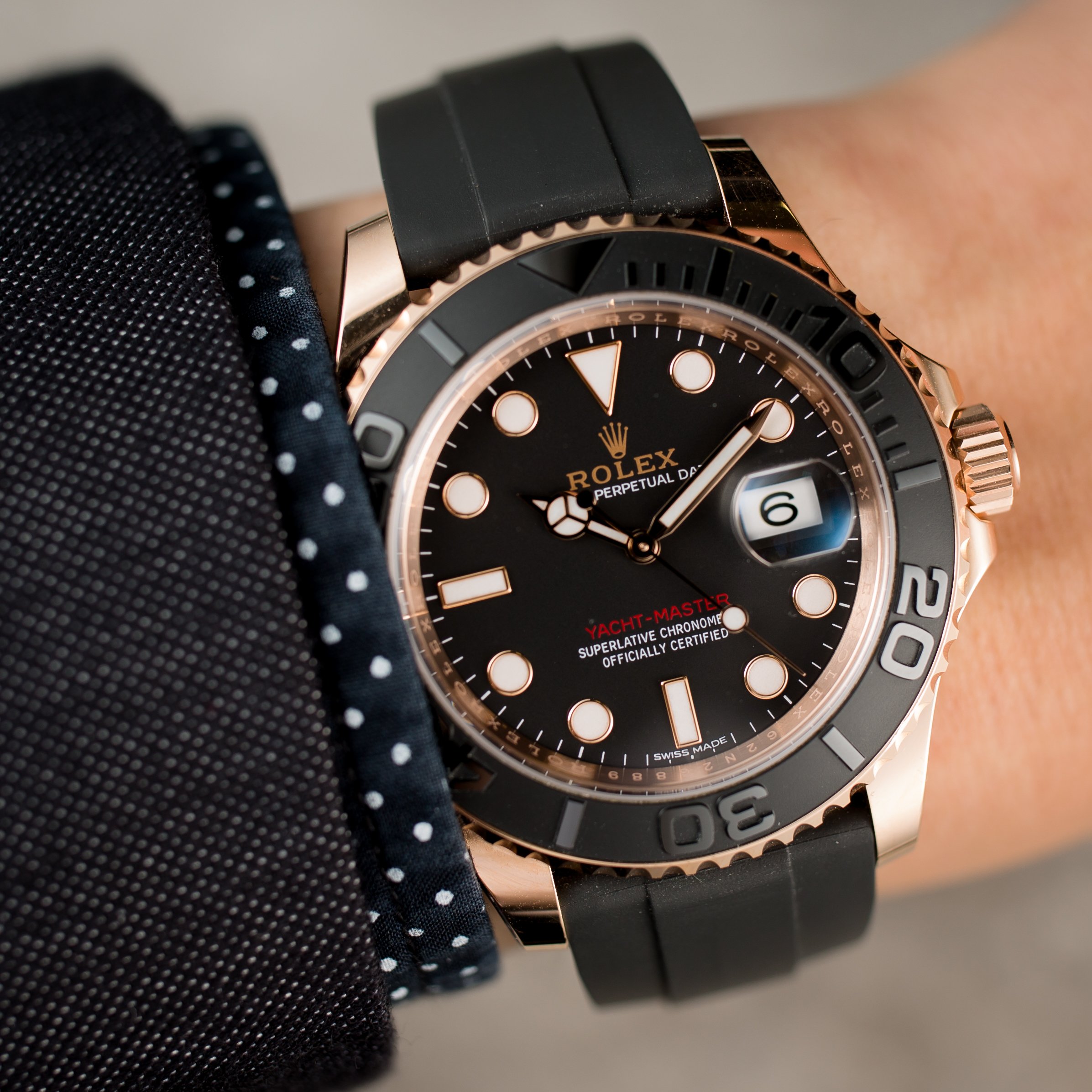
Whichever you choose, what you’ll come away with is a very interesting chapter in Rolex’s long running story. The Swiss watchmaking colossus has a history of quietly releasing radically altered variants on some of their most timeless designs. The 116655 and 268655 appeared with very little fanfare and have gone on to become real favorites among the brand’s devotees.
Whether they will go on to become all-time classics, it’s too soon to call. But with just enough subtle nods to Rolex’s illustrious past, such as picking the Yacht-Master name out in red, harking back to the Double Red Sea-Dwellers of the sixties, and combining them with a host of never-before-seen features, I wouldn’t bet against it.
